Hyundai IONIQ 5 vs Kia EV4 Sedan – Which car suits you better?
Two cars, one duel: Hyundai IONIQ 5 meets Kia EV4 Sedan.
Which one wins in performance, efficiency and value for money? Find out now!
Costs and Efficiency:
When it comes to price and running costs, the biggest differences usually appear. This is often where you see which car fits your budget better in the long run.
Kia EV4 Sedan has a slight advantage in terms of price – it starts at 35600 £, while the Hyundai IONIQ 5 costs 38500 £. That’s a price difference of around 2923 £.
In terms of energy consumption, the advantage goes to the Kia EV4 Sedan: with 14.30 kWh per 100 km, it’s barely noticeable more efficient than the Hyundai IONIQ 5 with 15.60 kWh. That’s a difference of about 1.30 kWh.
As for range, the Kia EV4 Sedan performs hardly perceptible better – achieving up to 633 km, about 63 km more than the Hyundai IONIQ 5.
Engine and Performance:
Power, torque and acceleration say a lot about how a car feels on the road. This is where you see which model delivers more driving dynamics.
When it comes to engine power, the Hyundai IONIQ 5 has a significantly edge – offering 650 HP compared to 204 HP. That’s roughly 446 HP more horsepower.
In acceleration from 0 to 100 km/h, the Hyundai IONIQ 5 is significantly quicker – completing the sprint in 3.50 s, while the Kia EV4 Sedan takes 7.40 s. That’s about 3.90 s faster.
In terms of top speed, the Hyundai IONIQ 5 performs evident better – reaching 260 km/h, while the Kia EV4 Sedan tops out at 170 km/h. The difference is around 90 km/h.
There’s also a difference in torque: Hyundai IONIQ 5 pulls clearly stronger with 770 Nm compared to 283 Nm. That’s about 487 Nm difference.
Space and Everyday Use:
Whether family car or daily driver – which one offers more room, flexibility and comfort?
Both vehicles offer seating for 5 people.
In curb weight, Kia EV4 Sedan is minimal lighter – 1815 kg compared to 1955 kg. The difference is around 140 kg.
In terms of boot space, the Hyundai IONIQ 5 offers hardly perceptible more room – 520 L compared to 490 L. That’s a difference of about 30 L.
When it comes to payload, Hyundai IONIQ 5 somewhat takes the win – 530 kg compared to 455 kg. That’s a difference of about 75 kg.
Who comes out on top?
Overall, the Hyundai IONIQ 5 shows itself to be leaves the rival little chance and secures the title of DriveDuel Champion.
It convinces with the more balanced overall package and proves to be the more versatile choice for everyday use.
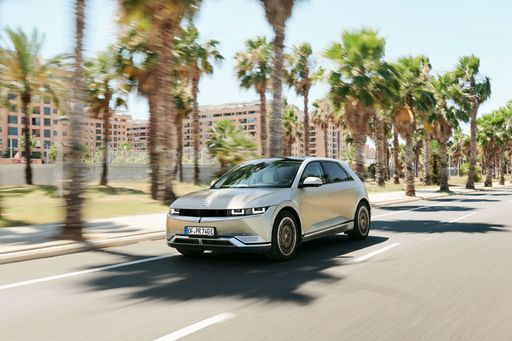
Hyundai IONIQ 5
Hyundai IONIQ 5
The Hyundai IONIQ 5 showcases a bold and futuristic design that captures attention with its striking facade and sharp lines. This electric vehicle offers an impressive blend of performance and efficiency, making it a compelling choice for environmentally conscious drivers. Inside, the spacious and tech-forward interior provides a comfortable and engaging driving experience for both driver and passengers.
details @ hyundai.news
@ hyundai.news
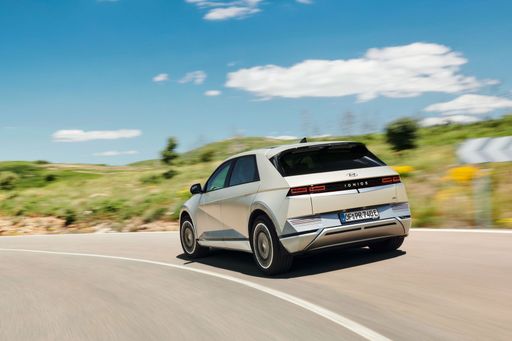 @ hyundai.news
@ hyundai.news
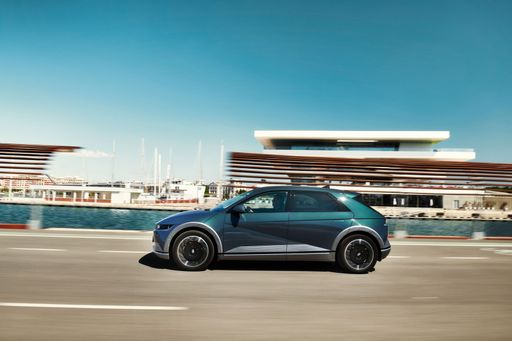 @ hyundai.news
@ hyundai.news
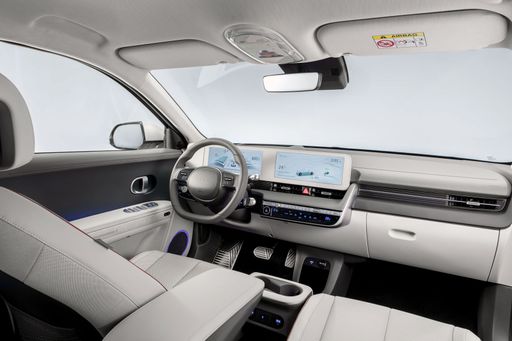 @ hyundai.news
@ hyundai.news
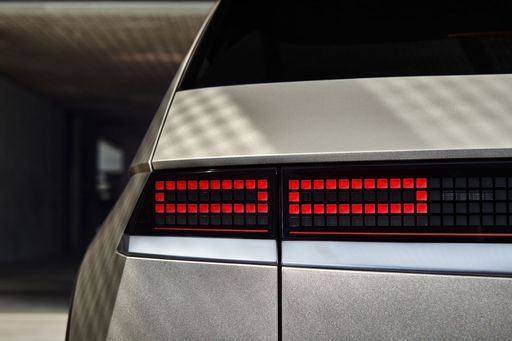 @ hyundai.news
@ hyundai.news
Kia EV4 Sedan
Kia's EV4 Sedan makes a striking impression with its sleek and modern design, embodying the brand's progressive approach to electric mobility. The vehicle's interior is a harmonious blend of comfort and cutting-edge technology, providing both driver and passengers with a premium experience. With its focus on sustainability and innovation, the EV4 Sedan is set to redefine expectations for eco-friendly sedans on the road.
details

|
|
|
|
|
Costs and Consumption |
|
|---|---|
|
Price
38500 - 64200 £
|
Price
35600 - 43700 £
|
|
Consumption L/100km
-
|
Consumption L/100km
-
|
|
Consumption kWh/100km
15.6 - 21.2 kWh
|
Consumption kWh/100km
14.3 - 16.2 kWh
|
|
Electric Range
440 - 570 km
|
Electric Range
456 - 633 km
|
|
Battery Capacity
63 - 84 kWh
|
Battery Capacity
58.3 - 81.4 kWh
|
|
co2
0 g/km
|
co2
0 g/km
|
|
Fuel tank capacity
-
|
Fuel tank capacity
-
|
Dimensions and Body |
|
|---|---|
|
Body Type
SUV
|
Body Type
Sedan
|
|
Seats
5
|
Seats
5
|
|
Doors
5
|
Doors
4
|
|
Curb weight
1955 - 2275 kg
|
Curb weight
1815 - 1914 kg
|
|
Trunk capacity
480 - 520 L
|
Trunk capacity
490 L
|
|
Length
4655 - 4715 mm
|
Length
4730 mm
|
|
Width
1890 - 1940 mm
|
Width
1860 mm
|
|
Height
1585 - 1605 mm
|
Height
1480 mm
|
|
Max trunk capacity
1540 - 1580 L
|
Max trunk capacity
-
|
|
Payload
385 - 530 kg
|
Payload
441 - 455 kg
|
Engine and Performance |
|
|---|---|
|
Engine Type
Electric
|
Engine Type
Electric
|
|
Transmission
Automatic
|
Transmission
Automatic
|
|
Transmission Detail
Reduction Gearbox
|
Transmission Detail
Reduction Gearbox
|
|
Drive Type
Rear-Wheel Drive, All-Wheel Drive
|
Drive Type
Front-Wheel Drive
|
|
Power HP
170 - 650 HP
|
Power HP
204 HP
|
|
Acceleration 0-100km/h
3.5 - 8.5 s
|
Acceleration 0-100km/h
7.4 - 7.8 s
|
|
Max Speed
185 - 260 km/h
|
Max Speed
170 km/h
|
|
Torque
350 - 770 Nm
|
Torque
283 Nm
|
|
Number of Cylinders
-
|
Number of Cylinders
-
|
|
Power kW
125 - 478 kW
|
Power kW
150 kW
|
|
Engine capacity
-
|
Engine capacity
-
|
General |
|
|---|---|
|
Model Year
2024
|
Model Year
2025
|
|
CO2 Efficiency Class
A
|
CO2 Efficiency Class
A
|
|
Brand
Hyundai
|
Brand
Kia
|
What drive types are available for the Hyundai IONIQ 5?
The Hyundai IONIQ 5 is available as Rear-Wheel Drive or All-Wheel Drive.
The prices and data displayed are estimates based on German list prices and may vary by country. This information is not legally binding.
